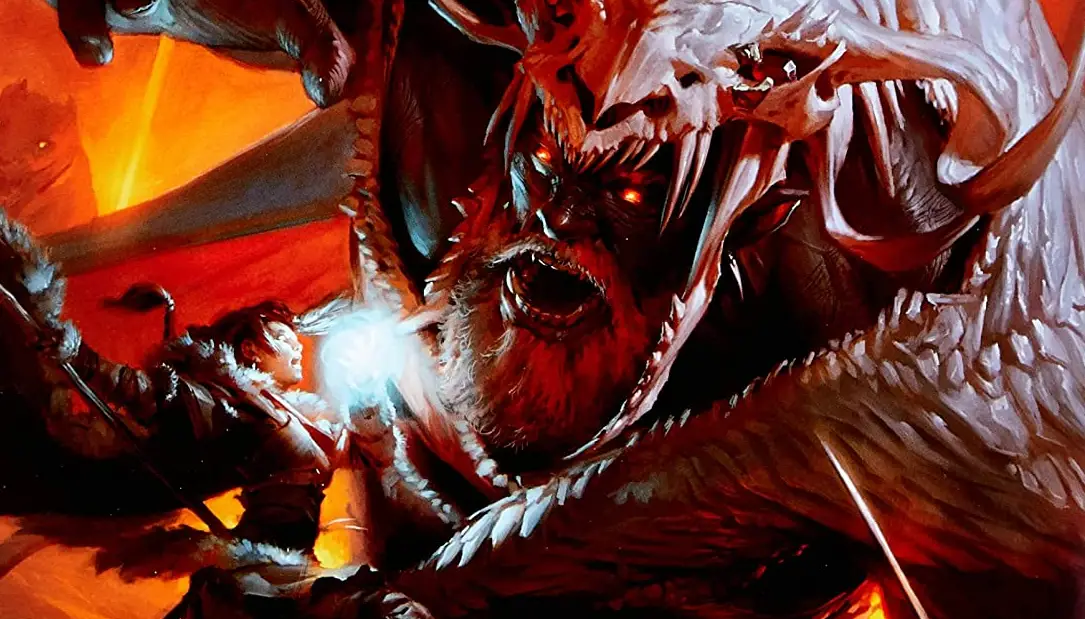Combat is an essential part of the whole DnD 5e experience. It’s been a staple of the Dungeons and Dragons franchise for decades. While sure, pacifist runs do exist in Dungeons and Dragons – very few players will opt for them.
After all, you spend all that time creating your character, building him up, fine-tuning every single aspect to your liking … only to not use it in the end. Boooring…
So, today, we’ll be taking a look at how combat works in DnD 5e.
We’ve talked a lot about individual aspects of the entire process previously on 5eguide. So if you’re curious about the particular aspects of the entire process, check out our site.
For that reason, we’ll be just taking an overview of combat – instead of diving into specifics.
With nothing more I’d like to add, let’s get into it.
Table of Contents
The Essential Parts of Combat in DnD 5e
Combat has a few essential parts to it that make the whole system work. You cannot proceed without them. So today, we’ll be taking a look at each of them.
Character Values and Stats
Before you can even think of getting into combat, you first must have your character created.
Characters are what add richness and variety to the world you are playing in. There is no such thing as “too much” when creating your character.
Well, at least regarding the lore aspect – the character’s values are a bit different.
There indeed are some things that are “too much” when creating a character. For starters, you can’t have 20 in every ability score – that will just break the game, and the fun.
So the first part and the most important part of your adventure is creating the right kind of character that you’d like to play for that campaign.
Speaking about characters’ stats. Get to know the stats of the creatures you will encounter, as knowing their stat values and characteristics can help you a long way if you have to fight them during your adventures. The Monster Manual rulebook is quite handy in that regard.
And don’t forget your items. Items are the other important part of your character. The right items can shift the balance or change the course of battle in an instant.
That covers the basics regarding creatures’ stats. Now onto the mechanics.
The Mechanics of Combat in DnD 5e
Now that we know our character’s values and stats, it’s time to face them up against another creature’s. May the best man/orc/dwarf/elf win.
The 1st part of combat is rolling for initiative. This is done by rolling with your Dexterity score, obviously the higher the better. The creatures with the highest result in the encounter go first.
Once all that has been figured out, it’s time to begin.
In a turn, you can perform certain actions. Things like moving, attacking, interacting, etc… We’ve written about them in the past so go check those guides out for the details.
These actions cost actions points. You use up action points by performing these actions – unless your Dungeon Master specifically allows you to perform an action without using up your action points.
Let’s take an attack as an example. If you decide to attack with a melee weapon, you have to roll either your Strength or Dexterity check against the target’s AC.
AC or Armor Class is a value that determines how well-armored a creature is. If your roll is lower than a creature’s AC then you do not hit, if it matches it or exceeded it; then you hit.
Magic Attacks work a bit differently, but much the same. When attacking with a magical attack you have to roll against an enemy’s spell save DC. If you match or exceed it, you hit.
For any kind of attack, if you land a natural 20 then you automatically hit and crit.
Now, the most important part that needs to be mentioned.
This whole system needs structure to it, it cannot be a simple free for all. As such, DnD 5e uses a rounds system. This is the reason you roll for initiative in the first place. Each character performs actions in a sequence when it is their turn. Once every character in an encounter has performed their actions the next round begins.
Finishing Comments
That is the basic gist of combat in DnD 5e. It isn’t hard to grasp – it’s just hard to get used to it.
There are many elements at play in the entire system. And depending on your experience with the game or similar games you might opt out of certain mechanics and features.
Regardless. As long as everyone is having fun then the game has done its job.


